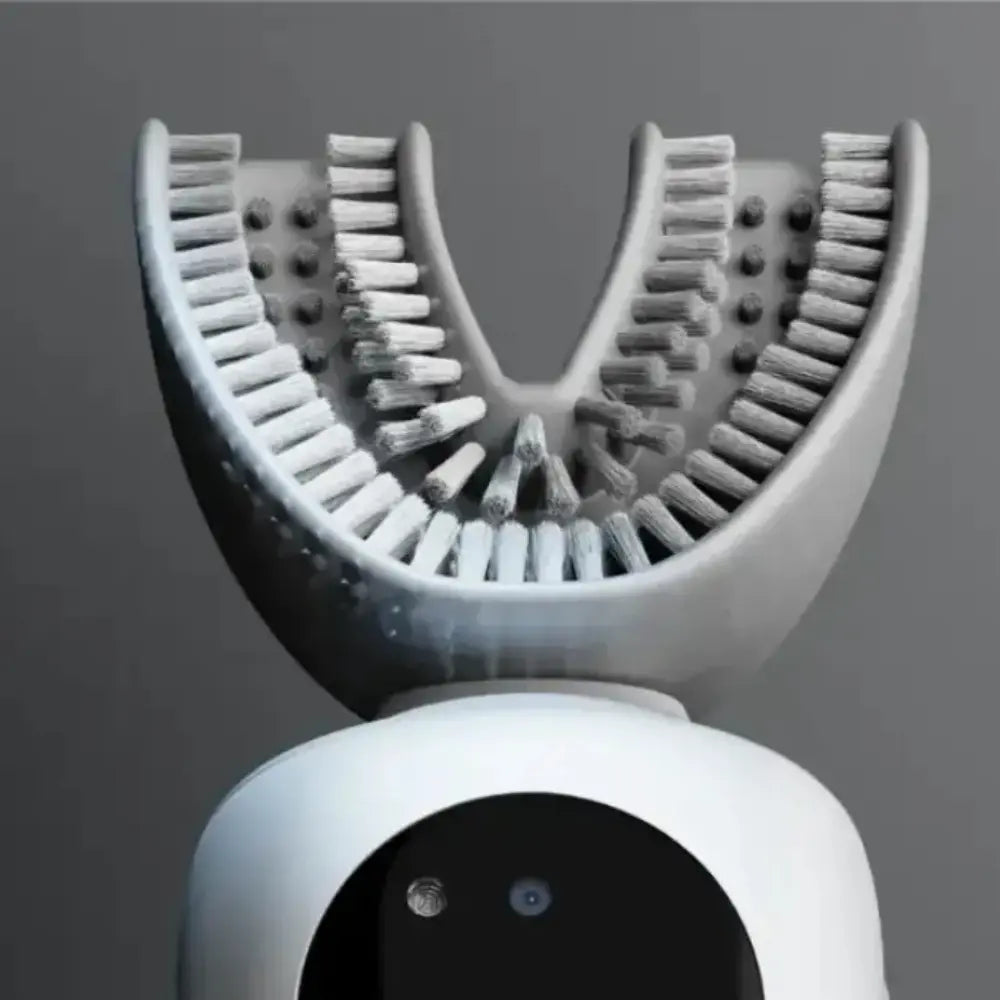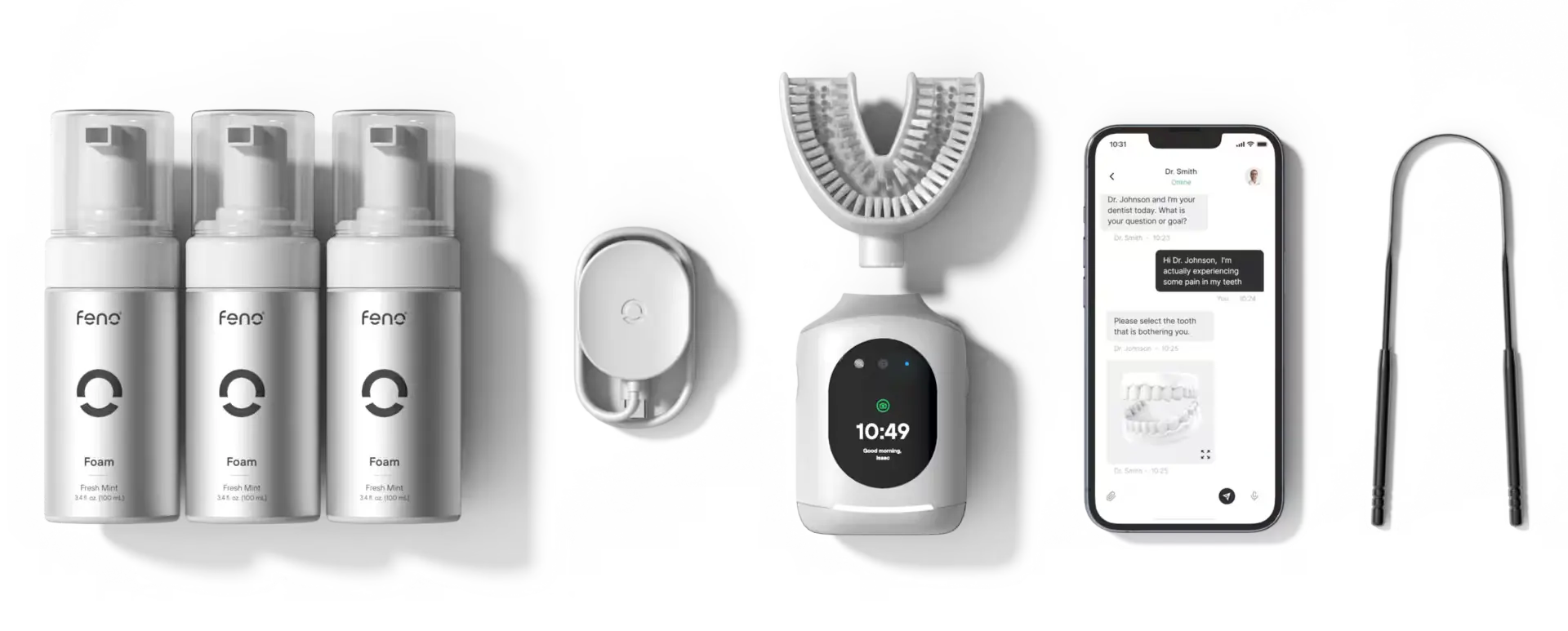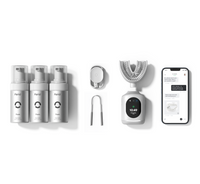
12 min read
Top Features to Look for in a High-Tech Toothbrush
Smart oral hygiene tools have come a long way, and much of that progress is thanks to exciting advancements in dental hygiene technology. These innovations are not just about adding flashy lights or extra vibration. They are focused on improving the effectiveness of how people clean their teeth every day. With increased awareness of the connection between oral health and overall health, toothbrush manufacturers are working to incorporate smarter and more user-friendly technology into their devices. From real-time feedback to connected mobile apps, toothbrushes today are designed to help users avoid cavities and bad brushing habits before they even begin.
Core Features of the Best Smart Toothbrushes
Toothbrush With App Control
These offer real-time insights into how well you’re brushing, while Bluetooth allows your brushing data to sync directly to a mobile dashboard. Connected high-tech toothbrush features help users follow guided routines, receive brushing reminders, and track improvements. Some apps even include visual maps of your mouth to show where you've brushed and what areas you missed. The goal is to make daily brushing more thoughtful and engaging through smart tracking.
Pressure Sensor Toothbrush for Gum Protection
Brushing too hard is a common mistake that can harm your gums and enamel over time. This helps protect against this issue by alerting you if you apply excessive force while brushing. Some models even reduce motor intensity when too much pressure is detected, giving you immediate feedback that encourages gentler cleaning. These built-in sensors are especially useful for people with a history of dental wear. By making users aware of their habits, these sensors help reduce gum recession while still maintaining effective plaque removal with every session.
Electric Toothbrush With a Timer
Many people don't brush for the recommended two full minutes, and that can leave parts of your mouth less clean than others. A bluetooth toothbrush guide helps users stay on track during each brushing session by solving this problem. Timers often work in 30-second intervals, prompting you to switch quadrants of your mouth so that every section gets equal attention. This leads to better coverage and a more thorough clean each time you brush. Consistent timing also helps establish a healthy brushing habit, ensuring that even children or those with distractions develop a routine that covers every tooth surface.

Toothbrush With Brushing Modes
Everyone’s dental care needs are different. Some have sensitive gums, while others want whitening or deep-cleaning features. That’s where a toothbrush with brushing modes becomes valuable. These brushes let you switch between different cleaning intensities or motions to match your personal needs. Whether you need a gentler setting after dental surgery or a more vigorous scrub to fight surface stains, brushing modes offer flexibility. Some models even adapt automatically based on the brush head or detected brushing style. This adaptability allows the toothbrush to serve multiple users or cater to changing oral health conditions.
Cleaning Technology That Enhances Plaque Removal
Sonic and Ultrasonic Bristle Motion
Toothbrushes that use high-frequency vibrations are changing the way we remove plaque. Sonic brushes move bristles side to side at tens of thousands of strokes per minute, while ultrasonic models use even higher frequencies to disrupt plaque on a microscopic level. This advanced movement helps break down biofilm and reach into tight spaces between teeth and under the gumline. Such models are beneficial for people with braces or crowded teeth, where regular brushing may miss hard-to-reach spots. Using sound-based motion instead of pressure provides a gentler yet more effective method for maintaining a healthy smile.
Electric Toothbrush Sensor Pressure Technology
The introduction of electric toothbrush sensor pressure tools has taken precision brushing to the next level. These sensors fine-tune the brush’s performance by adjusting power levels to ensure safety and comfort. Some models illuminate LED indicators or send real-time alerts through a paired app when too much force is applied. A proactive approach teaches proper brushing pressure without guesswork. As a result, users are better able to clean their teeth thoroughly while avoiding the negative effects of excessive brushing.
Advanced Toothbrush Designs
When it comes to achieving a professional-level clean at home, design plays a critical role. The advanced toothbrush options available today offer integrated features that dig deeper to remove buildup. Here are some key innovations:
- Multi-Length Bristles: Modern toothbrushes now incorporate multi-length bristles to improve reach and performance. These vary in height, allowing the brush to clean multiple surfaces simultaneously, including between teeth and along the gumline, which are areas notoriously difficult to reach with uniform bristles. This diversity in bristle length creates a cascading effect, where shorter bristles polish the tooth surface while longer ones sweep debris from tight crevices and interdental spaces. For users with braces, this feature significantly boosts effectiveness by enhancing plaque removal without requiring awkward angling or excessive pressure.
- Flexible Brush Necks: This feature enables the brush head to bend and contour in response to pressure and movement, ensuring consistent contact with every tooth surface, even in curved or awkward zones like the molars or the backs of the front teeth. By adapting to the natural shape of your mouth, the flexible neck helps maintain even bristle pressure, reducing the risk of overbrushing, which can lead to gum recession or enamel wear. This added maneuverability also means fewer missed spots and more efficient cleaning with every stroke. Furthermore, the flexibility allows the brush to absorb some of the applied pressure, making it ideal for those with sensitive gums or a heavy-handed brushing style. The dynamic design empowers users to be thorough without causing harm, and over time, it encourages better brushing habits.
- Curved or Diamond-Shaped Heads: These uniquely contoured heads are designed to reach behind better back teeth, the inner surfaces of incisors, and other difficult angles where plaque often hides. The tapered edges of a diamond-shaped head concentrate the bristle tips into tighter areas, allowing for more precise targeting of buildup in the gum pockets and rear molars. This ergonomic upgrade optimizes the direction and force of brushing, allowing for more focused plaque removal.
- Power Boost Modes: These modes are especially beneficial for zones where plaque accumulates quickly, such as behind lower front teeth or around dental work like crowns and bridges. Users can either activate them manually or rely on smart sensors that detect resistance and adjust intensity automatically. This targeted cleaning ensures more thorough plaque removal without sacrificing gum comfort or safety. For example, after consuming sugary or acidic foods, the user can engage power boost mode for a more aggressive cleaning session that still remains within safe pressure limits.
- Cross-Cut and Zig-Zag Bristle Layouts: The alignment of bristles is a powerful determinant of how effectively a toothbrush removes debris and plaque. Cross-cut and zig-zag bristle layouts are strategically engineered to maximize coverage and efficiency in fewer strokes. These configurations direct bristles at opposing angles, allowing them to interlock with the grooves of teeth and reach multiple planes simultaneously. A crossfire-like approach lifts and sweeps away more particles than straight, uniform rows. The staggered layout also introduces micro-movements that mimic the action of flossing, especially in tightly spaced teeth.
With consistent use, these tools transform your dental routine into an optimized practice for long-term oral health.
AI Coaching and Feedback Features
Some of the most advanced electric toothbrush models now include AI-powered coaching to guide you in real time. These tools track brushing habits and offer suggestions through companion apps. As mentioned previously, you might get alerts about missed areas or notifications to brush longer in neglected zones.
Data Tracking and Performance Monitoring Tools
Sync Brushing Metrics
For individuals who utilize health platforms to track their wellness, integrating brushing data can be a valuable addition. Some smart toothbrushes are designed to sync brushing metrics with broader health systems, allowing your oral hygiene habits to become part of a complete wellness profile. This integration helps track how dental routines fit into your daily lifestyle. With connected ecosystems, healthcare apps may correlate brushing data with diet, sleep, or general wellness patterns. This level of connectivity enhances user awareness, encouraging better behavior across the board.
Firmware Updates
A product that supports software upgrades ensures you’re always using the latest improvements without buying a new device. Many brands now offer firmware updates to add new brushing modes, optimize performance, or fine-tune the app experience. These updates are downloaded through the companion app and installed directly onto your toothbrush. It’s a subtle feature that enhances the value of the brush and keeps it relevant as new dental care insights emerge. Firmware upgrades may also correct technical bugs or introduce more intelligent tracking.

Ergonomics, Battery Life, and Charging Convenience
Rechargeable Electric Toothbrush
A reliable toothbrush should deliver extended use between charges to minimize hassle, especially for those who travel or maintain busy schedules. Modern brushes often last several weeks on a single charge thanks to energy-efficient motors and innovative sleep modes. Some models even display battery levels or send alerts via their apps when it’s time to recharge. This dependable battery performance ensures consistent usage without interruption. It also reduces the need to carry charging cables frequently.
Comfortable Handle Grip
Design matters, and a comfortable handle grip with non-slip texture helps ensure control and stability, even when wet. Ergonomics plays a crucial role in promoting proper technique, as a balanced grip reduces wrist strain and maintains steady movement. Many models are crafted from high-quality materials that can withstand daily use without degrading quickly. A durable build also means the device won’t crack or wear out under the pressure of regular use.
Splash-Proof and IP-Certified for Safe Bathroom Use
Since toothbrushes are constantly exposed to water, they must be protected against moisture to function reliably. A well-built toothbrush should be splash-proof and IP-certified, meaning it meets tested standards for water resistance. This makes the device safe for use near sinks or in steamy bathrooms. In some cases, waterproof designs allow the brush to be rinsed directly under running water without damaging internal components. This protection extends the device's lifespan and provides users with peace of mind.
Brush Head Customization and Long-Term Maintenance
Interchangeable Brush Heads
Smart toothbrushes become even more effective when paired with the right brush heads. Many models are designed with interchangeable brush heads that allow users to switch between different types depending on their needs. This modular approach gives people the flexibility to select a head that is best suited for specific oral conditions. These heads typically snap on and off with ease, making it simple to maintain proper hygiene standards by replacing them regularly. Keeping a supply of extra brush heads on hand ensures that your smart toothbrush always performs at its best. Manufacturers now offer replacement heads with targeted features, such as polishing cups for stain removal or micro-thin bristles for gum care. These heads are often color-coded or labeled for specific functions, making it easier to identify the right one. Regular replacement is essential because worn-out bristles become less effective and can even damage enamel.
Bristle Options
The variety of bristle types now available enhances personalization in a way that fits nearly every brushing need. Modern tech for dental care includes heads made with innovative bristle configurations designed for specific results. Below are the most commonly offered styles:
- Soft Bristles: These are designed to be gentle while still providing effective cleaning of the teeth and gumline. Their pliability allows them to conform to the natural contours of teeth, enabling access to small crevices without applying excessive pressure. It reduces the risk of enamel abrasion and gum trauma, which can lead to long-term dental issues such as increased sensitivity or gum recession. Dentists often recommend soft-bristle toothbrushes to patients who tend to brush aggressively, as the flexibility offers forgiveness while maintaining cleanliness.
- Medium Bristles: Considered a balanced option for those who want comfort and increased cleaning power. These bristles offer greater stiffness than soft ones, which enhances their ability to scrub away food particles, plaque, and light stains. They are ideal for individuals with generally healthy gums who do not experience sensitivity and desire a more invigorating brushing experience. The firmer texture provides a sense of resistance, often perceived as a more thorough clean, especially along the chewing surfaces of molars and premolars. However, unlike hard bristles, medium bristles do not typically cause harm to gum tissue when used with proper technique. They can be handy for people who consume stain-prone foods and beverages like wine, tomato sauce, or curries, as they offer better scrubbing action.
- Tufted Bristles: Tufted ones stand out for their unique arrangement, which often includes compact clusters designed to access hard-to-reach areas. The dense tufts maneuver effectively around wires, brackets, and along the edges of gumlines, helping to minimize the risk of gingivitis and tooth decay in these high-risk areas. Additionally, tufted brushes are often used for targeted cleaning tasks where precision is essential. The specialized grouping also creates more pressure at the point of contact, making them ideal for dislodging stubborn particles from tight interproximal spaces.
- Whitening Bristles: Unlike whitening toothpaste, which can sometimes rely on stronger chemical agents, these bristles provide a mechanical method of stain removal, reducing the reliance on harsher products. Some versions even come with color-fading indicators to signal when replacement is needed, ensuring optimal polishing performance is maintained. Despite their effectiveness, whitening bristles are generally gentle enough for daily use, especially when built into soft or medium-density heads.
The bristle variety available in modern toothbrushes allows users to tailor their oral hygiene tools to meet specific dental needs and preferences.
Integrating tech for healthy teeth into your daily schedule helps make oral care more intentional and results-driven. Smart brushes offer the structure and support that many people need to improve brushing quality. Over time, these tools help transform routines that once felt rushed or ineffective into personalized habits that support healthier gums and cleaner teeth. When paired with dental checkups and proper flossing, a high-tech toothbrush becomes a cornerstone of proactive care. The real value lies not only in the technology itself but in how it influences your behavior.
Share




